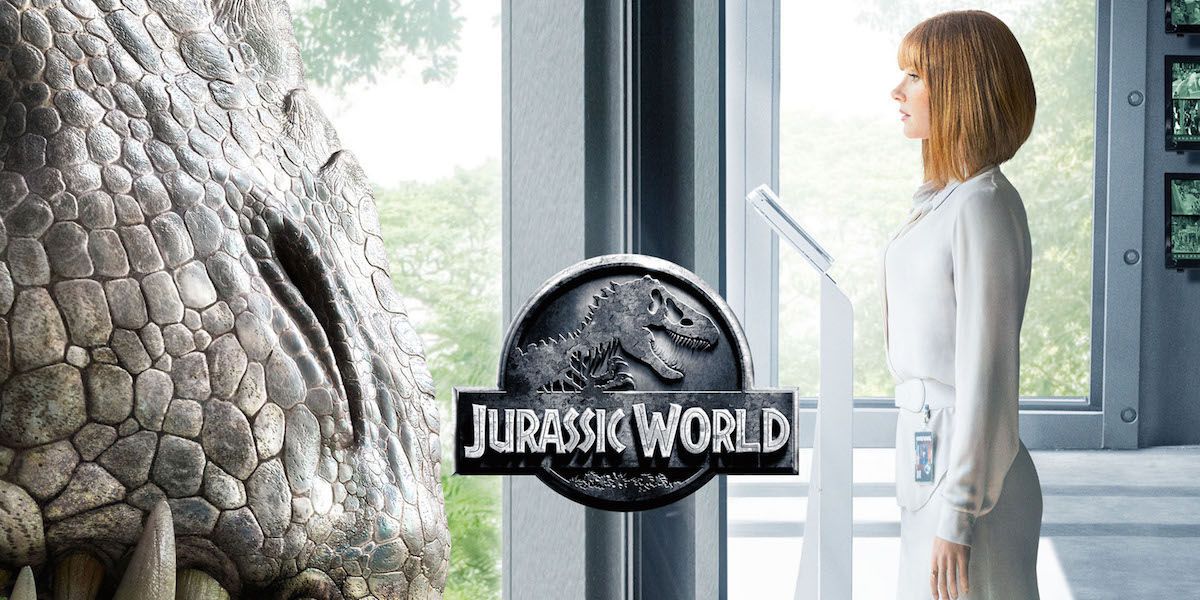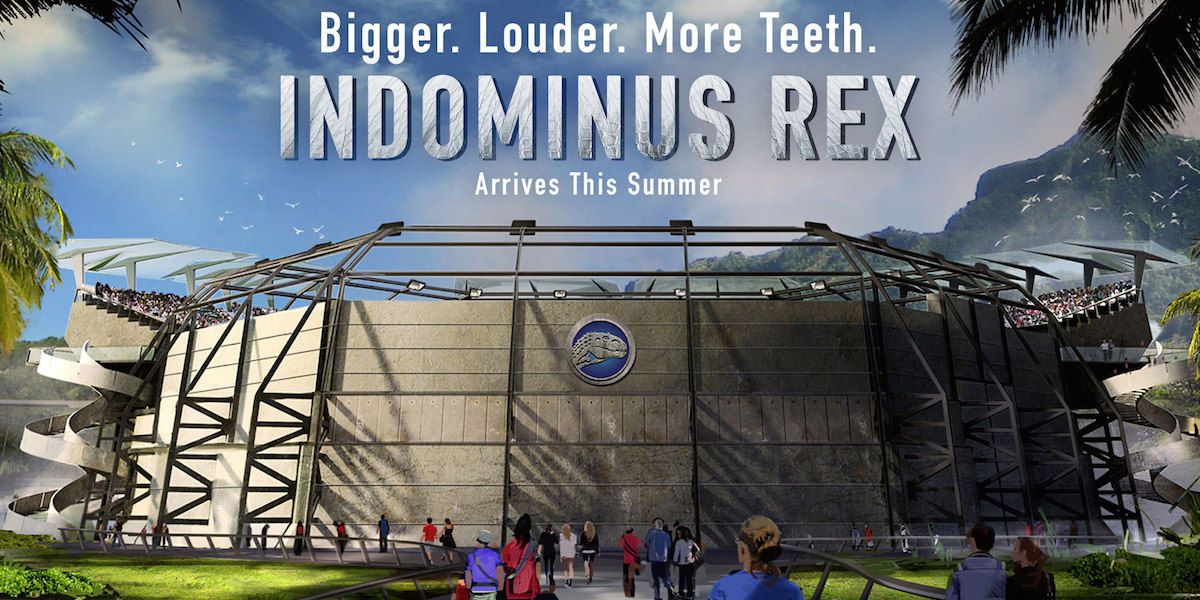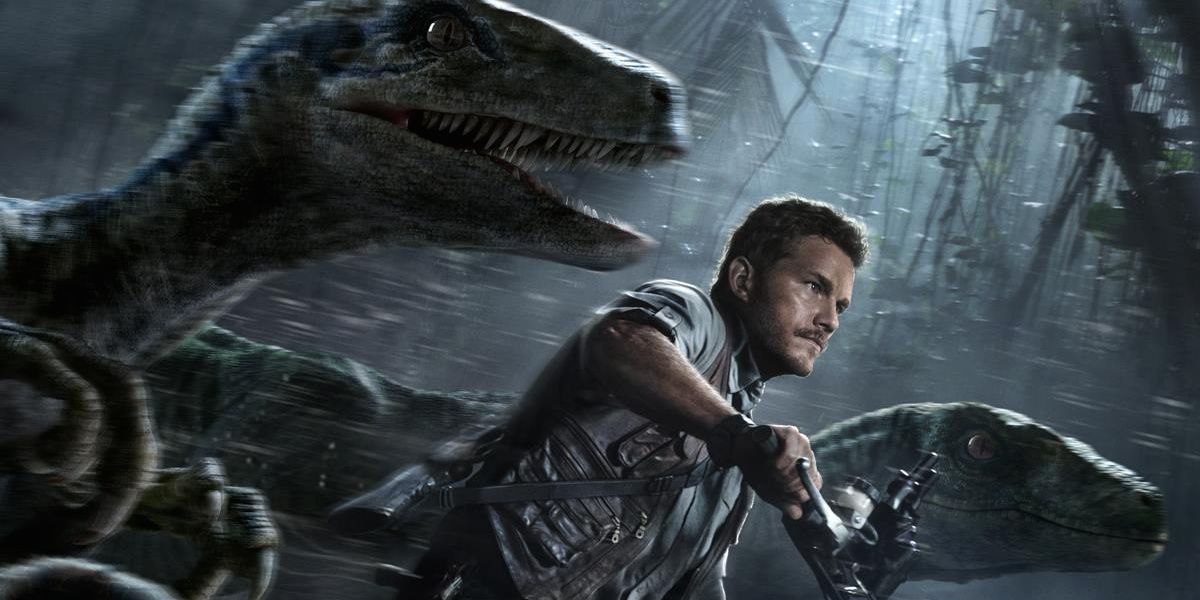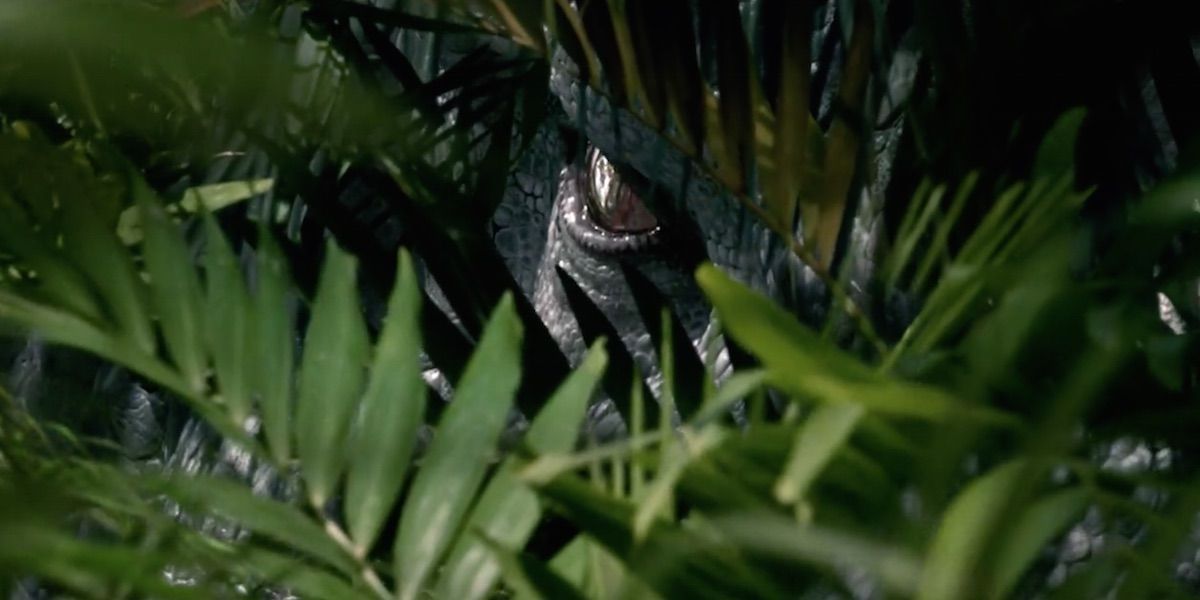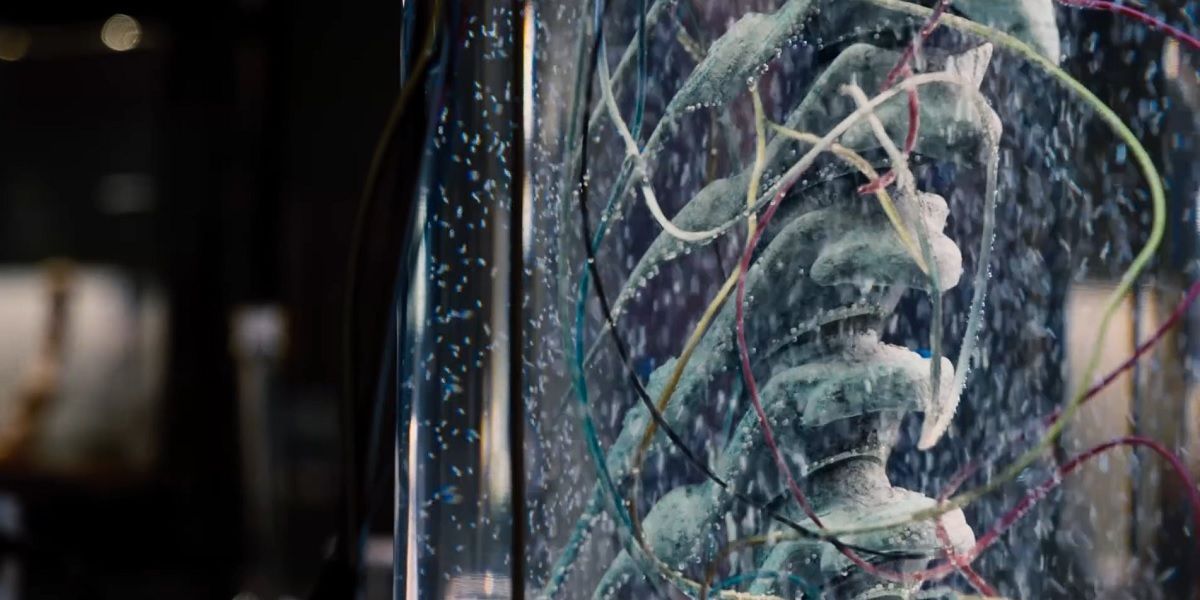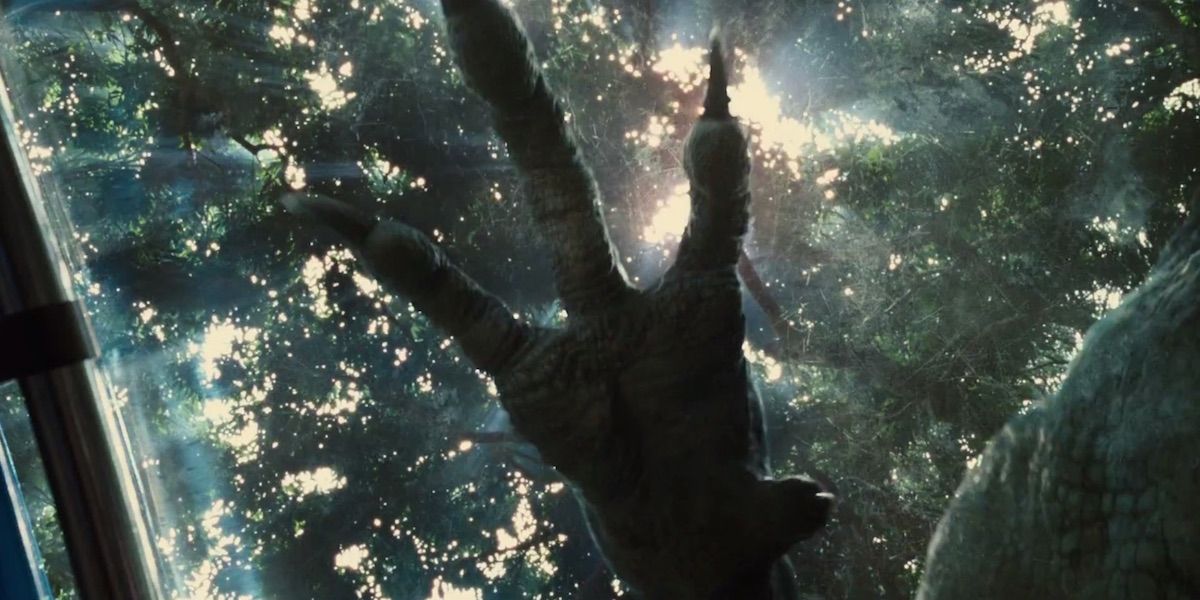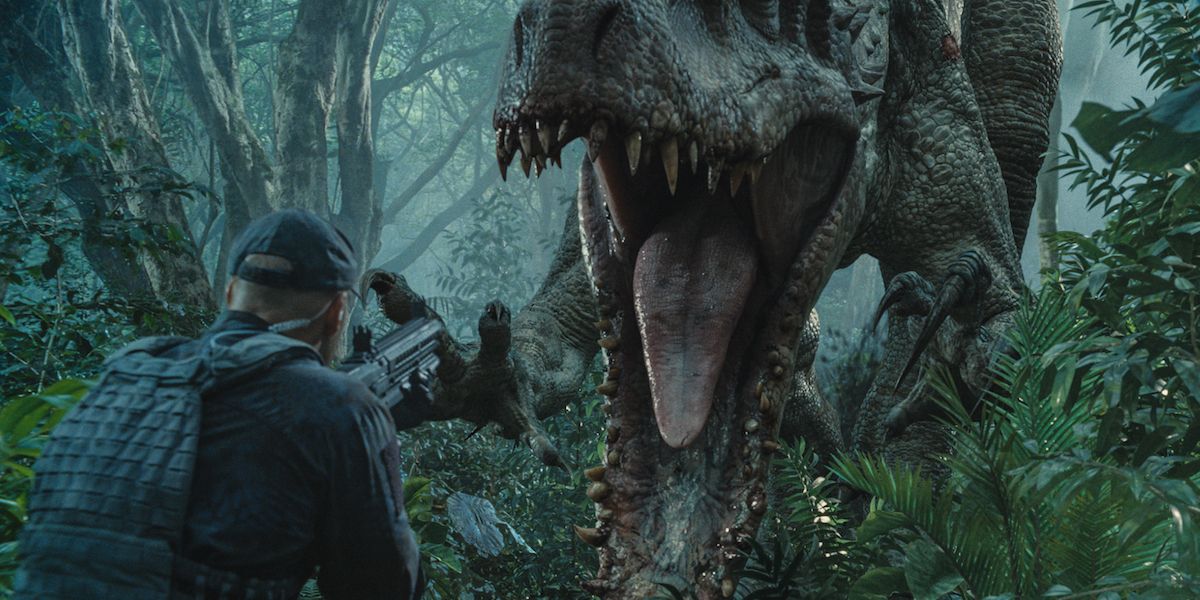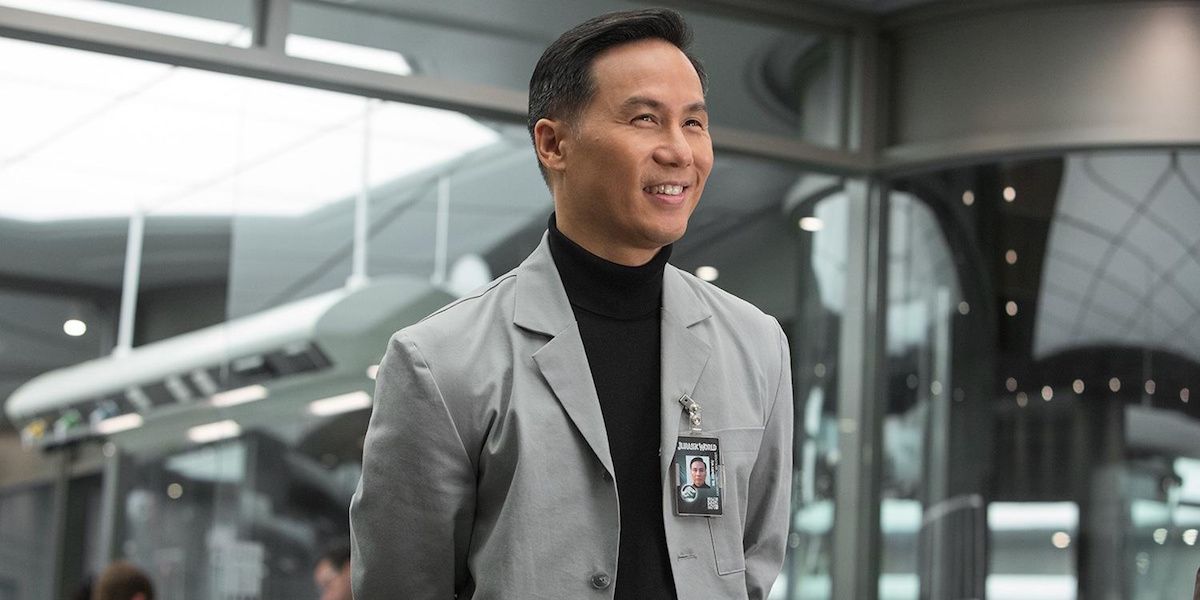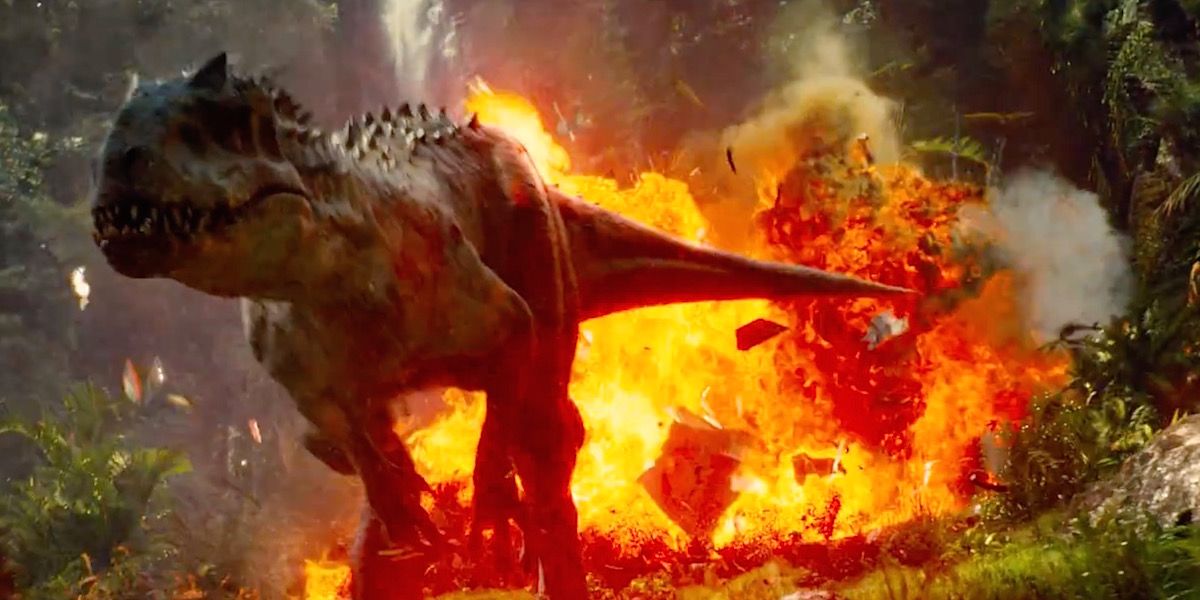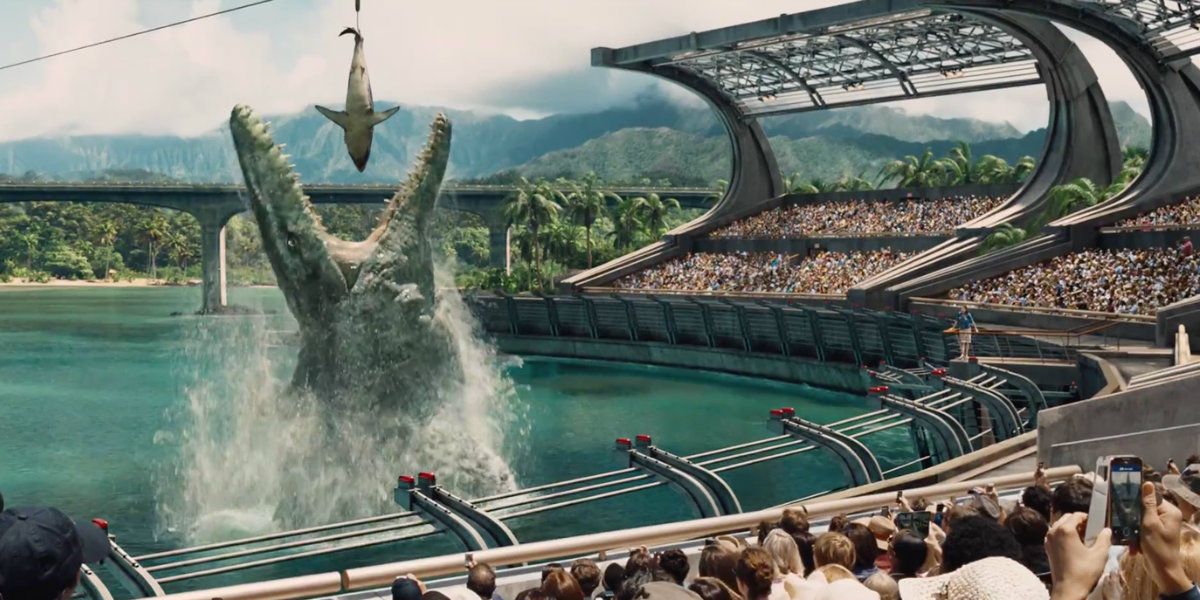Fourteen years after viewers last journeyed to a Jurassic Park movie, Steven Spielberg's de-extinct dinosaurs are back on the big screen in Jurassic World. However, unlike the rescue mission adventures depicted in Jurassic Park's original two sequels, the latest entry in the franchise presents a world that moved past InGen's prior failures - and, under the guiding hand of Masrani Global, has realized John Hammond's original vision: a fully-functional and innovative dinosaur park.
Yet, while Jurassic World continues to profit, a cloned T-rex simply isn't as impressive to a generation of kids that have never known a world without dinosaurs - and, in order to keep park attendees coming back, Jurassic World introduces a new, high-profile, attraction every few years. The parallels between Jurassic World, the fictional park, and Jurassic World, a fresh entry in a dormant Hollywood franchise, are hard to ignore. Enticing visitors back (to Isla Nublar and the box office) meant creating something entirely original, rather than digging into the historic record for a dino-star. The answer? A hybrid creature: Indominus rex (Fierce/Untamable King).
Trailers for Jurassic World have made it clear that, like the T-rex, Velociraptors, and Spinosaurus before, InGen's scientists overreached when they cooked-up Indominus rex - and the same lack of humility that demolished the original Jurassic Park threatens to destroy its successor. Yet, even after seeing Jurassic World, viewers might still be a little confused about how the hybrid dinosaur fits into the expanding mythology of Jurassic Park - as well as curious about the various animals that gave Indominus rex its deadly range of abilities. For that reason, we’re here to help breakdown the origins of Indominus rex - as well as the real reason for its creation.
Our discussion is going to be full of SPOILERS for Jurassic World, so READ NO FURTHER unless you’re all caught up. You have been warned.
MAJOR SPOILERS FOLLOW
CLICK on any topic to jump directly to it:
- Why did Masrani Global want to create Indominus rex? (This Page)
- Which animal DNA samples were included in Indominus rex and what are the hybrid dinosaur's abilities?
- What was In-Gen's true reason for creating Indominus rex?
-
Why did Masrani Global create Indominus rex?
As mentioned, while cloned dinosaurs might have impressed children of the 1990s, in the Jurassic World universe, many kids have grown up with the ability to see their favorite dinosaurs in the flesh, at Masrani's Isla Nublar dinosaur zoo/theme park. As a result, de-extinction itself isn't enough to entice return visitors back to Jurassic World on a regular basis. For many attendees, the initial magic has worn off.
To keep park attendance (and revenue) up, Masrani invested millions in the creation of new "attractions" - including the Jurassic Lagoon (and Mosasaurus aquarium show) as well as Jurassic World Aviary (with Dimorphodon and Pteranodon inhabitants), in addition to retooled exhibits for returning dinosaur residents (such as an improved immersion-style paddock for Jurassic Park's original T-rex). For their newest attraction, Masrani commissioned Jurassic World's geneticists, led by Jurassic Park scientist, Henry Wu (B.D. Wong) to develop a hybrid creature - one that would be give both children and adult attendees nightmares.
Specifically, a bigger, scarier dinosaur with more teeth.
After experimentation with gene-splicing from a variety of animal sources (past and present), Jurassic World scientists cooked up a pair of mutant "dinosaurs" and named the newly created species Indominus rex. Shortly after, the older Indominus killed its younger sibling - and the hybrid dino was quarantined to a high-security paddock four miles from the main Jurassic World compound.
Nevertheless, as Masrani Global prepared to introduce the Indominus rex exhibit to parkgoers, even securing sponsorship from Verizon Wireless, the man-made dinosaur is revealed to possess dangerous abilities (inherited from its hybrid DNA sources) that undermine Jurassic World security measures. Jurassic World showcases several of Indominus rex's inherited traits but stops short of disclosing everything the mutant dinosaur could do - as well as which animals contributed to the creature's DNA. Nevertheless, thanks to pre-release details, interviews, and merchandise, we've been able to piece together most of the Indominus rex genome.
NEXT PAGE: What Are the Hybrid Dinosaur's Abilities?
-
What Animal DNA Was Used for Indominus rex and What Are the Hybrid Dinosaur's Abilities?
Unfortunately for the casualties of Jurassic World's collapse, the InGen board prevented Dr. Wu from disclosing DNA sources used to build Indominus rex - even to Masrani himself (more on that in the next section). Had Wu and the InGen board been straightforward, Jurassic World staff might have been able to successfully contain, care for, and socialize the Indominus Rex (as evidenced by success with a trained Velociraptor pack); instead, the hybrid dinosaur was raised in isolation, denied the ability to hunt, with no positive human (or dinosaur) relationship to keep the creature in check. Without insight into the dinosaur's genetic makeup, park staff was unable to accurately predict and account for the creature's dangerous blend of evolutionary traits - resulting in the animal's eventual escape.
Jurassic World's creators have been reluctant to outline the full breakdown of Indominus rex's genetic source but Wu teases a few throughout the film. As a result, we've put together a breakdown of the most important ingredients - accompanied by an explanation of how each DNA source is expressed/utilized by the hybrid dinosaur:
- Tyrannosaurus rex: The base framework for Indominus rex's genome. Provided a powerful musculature - including heavy tail and jaws (capable of crushing bone) - paired with agile and swift movement (relative to the creature's size).
- Abelisaurs - In general, the inclusion of Abelisaur DNA exaggerated T-rex traits - making Indominus bigger and tougher than a standard Tyrannosaur. Specifically: enormous 40ft+ size (Giganotosaurus), more teeth (Majungasaurus) ultra-tough bony osteoderms (Rugops) with "hornlike" growths (Carnotaurus) over the eyes and along the back for defensive protection.
- Cuttlefish: Camouflage. Alteration of skin pigmentation, through the combined efforts of chromatophores and reflective iridophores and leucophores, Indominus could blend into the surrounding environment - reducing visibility while hunting (or hiding).
- Tree Frog: Thermoregulation through color alteration and lowered metabolic functions - allowed the Indominus rex to avoid infrared detection (an added layer of stealth on top of environmental camouflage).
- Pit Adder: Infrared (heat sensing) vision. Conversely, Indominus rex "sees" in infrared - allowing the apex predator to sense hidden or obscured prey (as well as target especially vulnerable areas on an attacker's body).
- Velociraptor: While Indominus rex received its enormous size from T-rex and Abelisaur DNA, its brain was engineered from problem-solving intelligent Velocripators. Above-average intellect allowed Indominus rex to sense patterns in paddock security - as well as set traps by utilizing inherited traits to exploit vulnerabilities in Jurassic World's containment systems. Including Velociraptor DNA also enabled Indominus rex to communicate with "normal" raptors and, given the hybrid's size and durability, secure a place as the new pack alpha.
Yet To Be Revealed DNA Sources:
- (?): Large forelimbs with opposable thumbs: Other DNA sources were used in the creation of Indominus rex but not all of them can be identified (at this time). While dinosaur expert, and Jurassic World consultant, Jack Horner has indicated that Therizinosaurus DNA was used to give Indominus rex larger forelimbs, very few dinosaurs came close to developing opposable thumbs. For that reason InGen likely turned to a, comparatively, modern DNA source (possibly Phyllomedusa tree frogs) to provide the hybrid with improved hand functionality and dexterity.
- (?): Electromagnetic distortion: Though unconfirmed to be an Indominus rex trait, several moments in Jurassic World feature distortion of shortwave radio and cell phone signals - whenever the hybrid creature is near. The ability to scramble radio waves is never mentioned by Dr. Wu but, unless viewers simply chalk the distortions up to subpar tech at the world's most advanced theme park, it's safe to assume that somewhere in the Indominus rex DNA cocktail is an animal (past or present) that can interfere with electronic signals.
On paper, given the amount of havoc that Indominus rex is able to (single-handedly) wreak in only twenty-four hours, the hybrid would read more like a genetically-engineered weapon - not a theme park attraction. Which, unbeknownst to Masrani, was the plan all along.
NEXT PAGE: The Real Reason InGen Created Indominus rex
-
What Was In-Gen's True Reason for Creating Indominus rex?
While Masrani commissioned the development of a bigger, scarier dinosaur to provide Jurassic World with a new attraction, the InGen board had larger (and more profitable) ambitions for hybrid-dino development. Foreshadowed by InGen's interest in weaponizing trained raptors, embodied via security head Vic Hoskins (Vincent D'Onofrio), Indominus rex was planned as a military asset. This isn't to say that Wu or Hoskins intended to use Jurassic World's Indominus rex specifically; however, at the very least the mutant creature was a test-run to help refine the manufacture of hybrid dinosaur soldiers.
For thousands of years, people have employed dogs and other animals in warfare - utilizing non-human evolutionary advantages (heightened smell, speed, and hearing, especially), to gain an upper-hand on the battlefield. Building on that foundation, Hoskins and In-Gen provided Owen (Chris Pratt) with funding to train Velociraptors - in the hope of replacing human soldiers with ruthless but loyal dinosaurs. Unfortunately, the plan wasn't quite as cut-and-dry as Hoskins hoped; yet, even though Jurassic World tumbled into chaos, InGen's goal of weaponized dinosaur hybrids was achieved.
In a brief scene that shows Dr. Wu escaping Jurassic World's genetics lab with frozen embryos, escorted by InGen soldiers, it becomes clear why the company would not allow Masrani nor Jurassic World's staff access to the complete Indominus rex genome: Wu's primary goal, working in collaboration with InGen's security arm, was to build a stealth killing machine under the guise of a zoological attraction.
Bribed by Hoskins, Wu tailored the Indominus rex's DNA (and subsequent traits) for durability and stealth - creating a monster that could be deployed at night (with thermal vision), strike quickly, and avoid detection from opposing forces (thanks to environmental blending and thermoregulation).
Given the number of well-trained Asset Containment team members and InGen security workers that lost their lives on Isla Nublar attempting to stop one Indominus rex, there's no doubt that, if dropped into a war-torn region, the hybrid (much less a pack of cloned hybrids) would offer unparalleled battlefield advantages.
After all, Masrani Global was not solely in the business of cloning dinosaurs, funding Jurassic World's reopening through telecommunication and oil industry profits, but the CEO's primary goal was akin to John Hammond's original dream for Jurassic Park: to create a place of wonder, where attendees, employees, and de-extinct animals can live in harmony. Considering Masrani's idealistic view, InGen's security arm concealed the plan to turn Jurassic World's dinosaurs into military assets from him - shoe-horning in dangerous evolutionary traits that posed a risk to the park, and would never have been included if Wu's primary goal was simply to make Indominus rex frightening to behold.
Ultimately, even though Owen was able to stop the rampaging Indominus rex (with the help of his raptor team, a Tyrannosaurus, and a Mosasaur), InGen and Wu still escaped Isla Nublar with decades of research and genetic samples - meaning that, while Jurassic World may never reopen, InGen's weaponized dinosaur program will likely resurface. After all, a Stegoceratops was initially planned to appear in Jurassic World.
It might sound crazy but given that Jurassic Park 4 was originally set to feature humanoid-dinosaur mutants, and since the franchise isn't likely to re-open Jurassic World, Universal Studios will likely want to keep upping the dino-rampage ante.
Time will tell what greedy InGen scientists cook up next but with Jurassic Park sequels already planned, and a major opening for Jurassic World in the books, it's safe to assume Indominus rex isn't the biggest or the most frightening dino-hybrid that audiences will see on the big screen.

